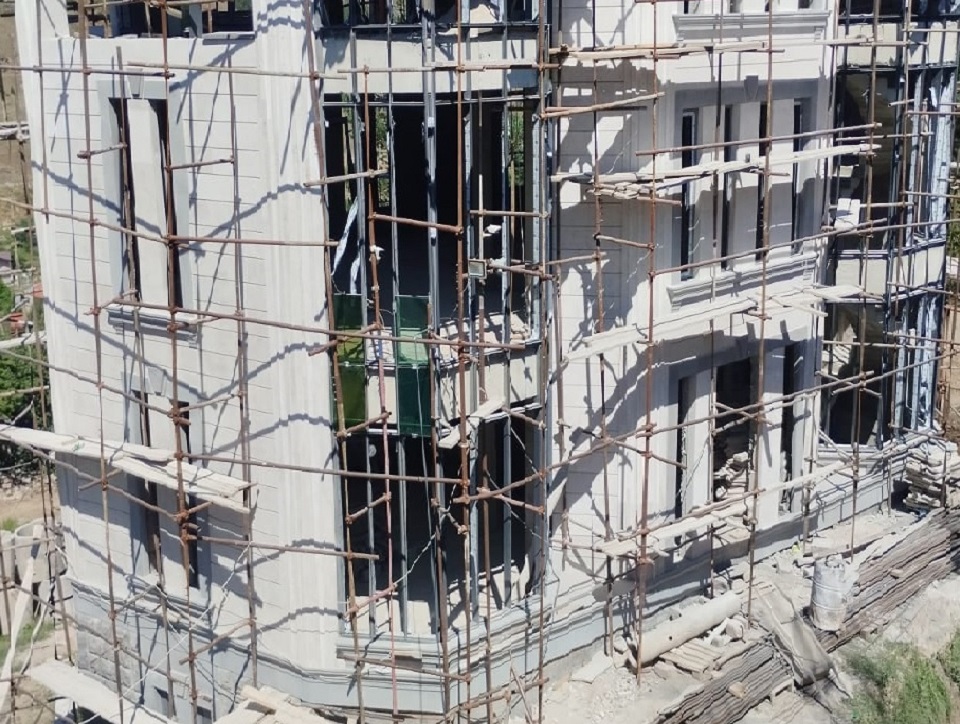STONE MASONRY
“WAELCON” LLC performs the entire complex of construction works for the arrangement of buildings and facilities; therefore, one of the most labour-intensive and responsible directions is masonry – a structure consisting of stones laid on the mortar in a certain order. It carries loads of its own weight and the weight of other structural elements based on it, and also performs heat-insulating, soundproofing and other functions.
The stonework is the construction work performed manually during the erection of stone structures of buildings and facilities.
Masonry is a structure made of artificial or natural stones laid on a mortar in accordance with certain rules.
Hard rocks have a high cost and are hard to process, so they are mainly used for cladding or for separate parts of buildings and facilities.
Rubblework and rubble concrete masonry require a lot of manual labor and have high thermal conductivity. This material is best to use for the construction of foundations. Faced with brick, rubblework and rubble concrete masonry are suitable for the basement and supporting walls.
Masonry made of hollow stones and blocks is mostly used in the construction of exterior walls of heated buildings. The good thermal properties of this material allow to reduce the thickness of the exterior walls.
The stones are arranged in a certain order to ensure the necessary strength and stability of the masonry. The method of stone placement is called masonry bond. There are three main rules for the bond:
- The first rule: the rows of masonry stones should be located parallel to each other and perpendicular to the load. The stones in the rows should be supported over the entire surface of the stone, which is provided by a horizontal mortar joint.
- The second rule: the profile planes of the contacting stones should be perpendicular to the rows. This results in the formation of the longitudinal joint and transverse weld of the masonry.
- The third rule: the longitudinal joint and transverse weld of the underlying rows of masonry should be bound by the overlying rows. As a result of the binding of stones in adjacent rows, the masonry works under the load as a single structural element.
The role of masonry mortars is quite important; a mixture of inorganic binding substances (cement, lime, clay), fine filler (sand, tuff, pumice) and water, gradually solidifying and turning into a stone-like state.
To increase the strength of the masonry, it is reinforced by laying metal grids in horizontal joints. The thickness of the joints should be at least 4 mm greater than the sum of the diameters of the reinforcement rods. If the diameter of the intersecting reinforcement rods is more than 5 mm, the grids are made in a zigzag and placed in 2 adjacent rows. Reinforcing masonry grids are arranged according to the project, but no less than in each 5th row of the masonry. For reinforced masonry, the grade of the solution in dry conditions is taken at least 25, and at least 50 in wet conditions.
Our company offers the following types of masonry used in construction:
- Wall masonry made of natural stones of regular shape (sawn stone or hewn blocks);
- Wall masonry made of hollow and light concrete blocks for external and internal walls;
- Different masonry made of large artificial blocks made of concrete, brick, or ceramic stones;
- Structural or decorative brickwork;
- Fundamental rubble concrete masonry made of natural rubble stones of irregular shape;
- Decorative architectural (cladding) masonry made of natural stones and blocks of regular shape;
- Masonry of concrete blocks made of heavy concrete; it is used in the construction of foundations, basement walls, and other underground engineering structures.































